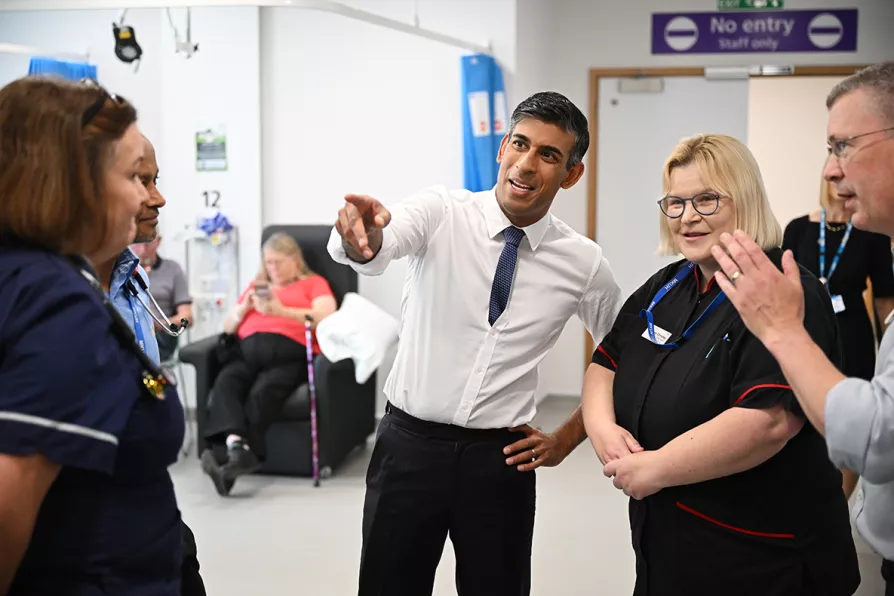Government falls short of its key NHS targets – again
Campaigners call for fair NHS pay and end to the ‘blatant failure’ of relying on private sector

 Prime Minister Rishi Sunak speaks to staff and patients in the SDEC, same day emergency care unit during a visit to Milton Keynes University Hospital, Milton Keynes, August 15, 2023
Prime Minister Rishi Sunak speaks to staff and patients in the SDEC, same day emergency care unit during a visit to Milton Keynes University Hospital, Milton Keynes, August 15, 2023
CAMPAIGNERS hammered home the urgent need to pay healthcare staff fairly and end the “blatant failure” of relying on the private sector, after the government fell short of its key NHS targets — yet again.
Prime Minister Rishi Sunak made cutting NHS waiting lists a key pledge in January last year, but since then numbers have gone up by 330,000.
According to the latest figures, there are 7.54 million outstanding treatments.
Similar stories

Diverting public funding to grow private-sector ‘spare capacity,’ actively undermines the funding and staff available to the NHS and results in a worse service, write JOHN PUNTIS and TONY O’SULLIVAN













